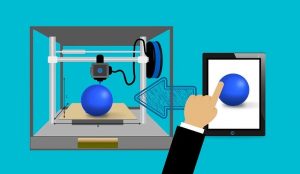
3D printing is revolutionizing the manufacturing industry. According to research cited by AMFG, the 3D printing materials market is projected to reach nearly a half-billion dollars by 2029. Using a 3D printer, manufacturing companies can build components and products layer by layer. There are different types of 3D printing, however, one of which is multi-material 3D printing. What is multi-material 3D printing exactly?
Overview of Multi-Material 3D Printing
Multi-material 3D printing, as the name suggests, is a form of additive manufacturing that’s characterized by the use of multiple materials. In other words, it can deposit two or more types of material simultaneously to build the respective component or product.
Most types of 3D printing can be characterized as either single material or multi material. The former involves the use of a single material, whereas the latter involves the use of two or more materials. It’s called “multi-material 3D printing” because it supports the use of multiple materials.
Multi-material 3D printing is a relatively new form of additive manufacturing. While 3D printers have been around since the early to mid-1980s, multi-material 3D printers didn’t appear until the turn of the 21st century. According to Wikipedia, the world’s first multi-material 3D printer, known as the Fab@Home, was released in 2006. Since then, numerous other multi-material 3D printers have been released.
Benefits of Multi-Material 3D Printing
With multi-material 3D printing, manufacturing companies can build complex products and components. Single-material 3D printing is somewhat restrictive regarding the applications for which it can be used. Since it only uses a single material, it doesn’t support complex products or components. Multi-material 3D manufacturing, on the other hand, allows manufacturing companies to build complex products and components using multiple materials at once.
Opting for multi-material 3D printing, as opposed to single-material 3D printing, can also cut production times for manufacturing companies. Multi-material 3D printers are complex machines that can quickly build products and components. Manufacturing companies may be able to build similar products or components using a single-material 3D printer, but it will probably take longer and require more labor.
In Conclusion
To recap, multi-material 3D printing is a form of additive manufacturing in which a 3D printer builds products or components using multiple materials. Multi-material 3D printers work by depositing layers of multiple materials, thus building a product or component. It differs from single-material 3D printing by involving the use of multiple materials, which allows for the production of more complex products and components.
